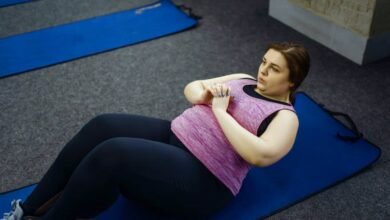Which Muscles Are Worked by Weight Training?

Which Muscles Are Worked by Weight Training? The first thing that comes to mind when you think of exercising is cardio-based workouts that get your heart rate up and make you sweat. A different exercise program, on the other hand, will give you a better workout and assist your mind focus even more on your body by concentrating on certain body parts. This type of exercise is known as weight training; as the name implies, you must lift or work with weights while using your body’s muscles. Let’s first understand what this nomenclature actually implies and how you need to prepare your body for such workouts before we delve into the mechanics of weight training.
By lifting weights, you can build resistance against the muscles you typically utilize for regular tasks. Your body can use more power and energy to produce a movement when resistance is created. This additional strain on your muscles encourages them to adapt and grow stronger, which is a great approach to exercise and developing a stronger core. Although employing tools like dumbbells and barbells is the perfect technique to create resistance, there are several weight-lifting machines that we are sure you have often appreciated at your own gym! To produce the same kind of resistance, many trainers also suggest using your own body weight in a few specific poses. Therefore, you don’t need to have any equipment or a gym membership to start working out. We advise you to think of better reasons why you aren’t working out more.
Read More:As Part of Cancer Treatment, How to Handle Holidays
However, you must make sure you have the ideal sportswear to complement your muscle-building regimen. You require both robust and breathable clothing.
Our body contains 600 muscles, and with the appropriate training, we can target each one individually and give our complete body the workout it needs to live a healthy life. Trainers and health professionals have separated our bodies into sections to help us better comprehend them. By focusing on each component individually, we can gradually work on all of our muscles.
1. Shoulders

The trapezius and deltoids make up the majority of the two muscles that make up the shoulders. When you perform exercises like raising your arms straight over your head and then lowering them to your sides while holding dumbbells or barbells, these muscles receive a thorough workout. When you perform pushups or other activities that require you to assume a plank position, these muscles are also among the most active, if not the most active.
2. Triceps
Three muscles at the back of your upper arm make up the triceps. These muscles are obviously highly significant since they enable you to lift weights and extend your elbows. When working on developing a muscular body, trainers frequently concentrate on the triceps.
3. Biceps
comprised of the brachial and brachioradialis muscles, or more generally known as the muscles we instantly flex when showcasing the physique of our trainers! These muscles are crucial for lifting weights while employing your upper body strength. Again, you can exercise these muscles using dumbbells, barbells, or just your own body weight.
3. Chest
The pectoralis (which covers larger muscular mass) and the pectoral minor are the two components of the chest muscles (which covers the smaller muscle mass). Both of these muscles can be worked at the same time with exercises like bench pressing. Pressing barbells to and from your chest while laying on a bench will increase its effectiveness.
4. Abs
The ABS muscles are the broad muscles that extend from your lower chest all the way to your pelvis. Any expert or amateur trainer will concentrate on the ABS because they are the muscles that are used the most when lifting weights. The ABS is the muscle you focus on the most whether your goal is to build six packs or simply have a flat tummy. When you lift weights for your abs, floor exercises like pushups and crunches predominate.
5. Back
The latissimus dorsi, rhomboids, and erector spinae make up the back. Pull-ups and back extensions both target the latissimus dorsi and rhomboids, while all exercises require a strong back. Back extensions also target the erector spinae. Don’t forget to work out your spine in your next set of workouts because the back muscles are responsible for a large portion of your body’s strength.
6. Glutes and Thighs
Who doesn’t enjoy working their thighs and glutes? Yes, we do. When it comes to working out these muscles, it is very difficult. not to mention uncomfortable as well! The glutes, which span your entire butt, are the biggest muscle in your body. So it’s reasonable to assume that one of your body’s most active muscles is the gluteus maximus! The quadriceps and hamstrings are the two primary muscles of the thighs; they are positioned on the front and the back, respectively. These muscles are worked during exercises like squats.
7. Calves
The gastrocnemius, which is the top component of the calf muscles, and the soleus, which is the lower portion, are separate muscles. Exercises that target these muscles include lunges and calf lifts. Our calves experience pressure even while we maintain plank or downward dog positions.
It is usually preferable to be well-prepared when working with weights in order to achieve the best outcomes. Take your time and become familiar with the positions needed to work on each muscle group. Even while the goal is to get stronger, let’s not forget that using our muscles puts us at risk for accidents and injury. And it is always essential to use caution when using weights in order to prevent any significant injuries. Never forget to warm up before any workout, and always begin slowly. Use the right weights and start out with a friend or trainer who is knowledgeable at working muscles with weights.







